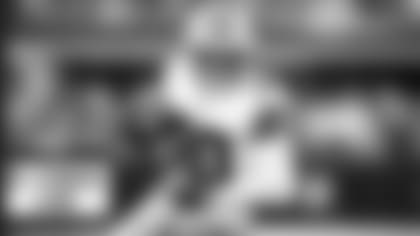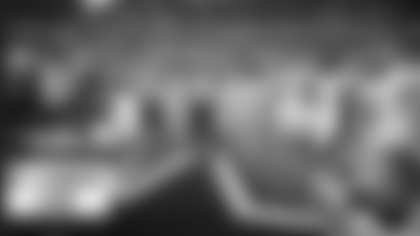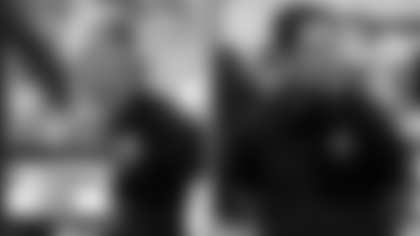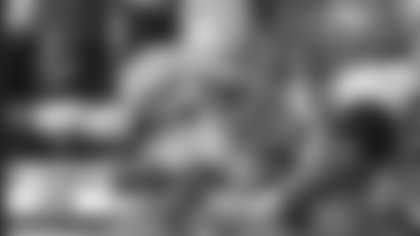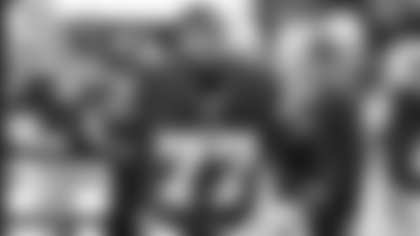FRISCO, Texas — I'm going to tell you something that will probably throw you back into your seat, so I hope you're not sitting on that plastic lawn chair that you've been refusing to throw away since 1979 because it was the one you were sitting in when Drew Pearson caught the Hail Mary toss from Roger Staubach, because it's going to fail you in five seconds.
4 …
3 ...
2 …
1 …
Tony Pollard has a chance to break the 1,000-yard mark in rushing yards when he takes the field against the Washington Commanders in the regular season finale, being only 65 yards away from the coveted running back mark, and he already has the second-most rushing touchdowns (5) in his NFL career, with a chance to push closer to his career-high (9) in Week 18 — currently averaging a very respectable four yards per carry through 16 games.
I told you that chair would fail you.
Now get up off of the floor, because you're embarrassing us.
If he achieves the yardage feat, it will mark the second year in a row in which he has, having rushed for 1,007 yards last season, but there's a reason it feels as if this can't possibly be true; and that's because the overall rushing attack has left much to be desired this season, and for several reasons.
First, let's be clear that this isn't a Tony Pollard problem. This isn't a Rico Dowdle problem. This isn't an offensive line problem. This isn't an RB3 problem. It's all of the above in varying amounts, because there's only been one stretch of time wherein the Cowboys' rushing attack has seen all involved operating on the same page, and that was Week 10 through Week 14.
They averaged 129.8 rushing yards during that stretch.
In the three games that followed, they're averaging only 82.33 rushing yards and have only one rushing touchdown — an inconsequential one from CeeDee Lamb (yes, a wide receiver) in Buffalo with the Bills enjoying a 31-3 lead late in the fourth quarter.
That trend won't win you any games in the playoffs, and might actually cost you sooner or later.
Here's a chart of the Cowboys' struggles in running the ball against the Lions, a playoff-caliber game in which they escaped with a one-point win, staving off a three-game losing streak in the process:
1st Quarter:
- 1st offensive drive: handoff left end for loss of 2 yards
- 2nd offensive drive: handoff right guard for loss of 3 yards
- 3rd offensive drive: right flat/RB screen for loss of 5 yards
- 3rd offensive drive (3rd-and-15): flip to RB left end for no gain
At the end of the first quarter, there were no positive plays from a running back. And being handicapped by the absence of an injured Rico Dowdle (also averaging roughly four yards per carry this season), whose ankle injury also impacted his level of play in the week prior, didn't help the Cowboys' case — nor did the inability of Deuce Vaughn to get any traction in a two-handoff, two-yard outing on the ground in Week 17.
And what of Hunter Luepke? Well, I'm glad you asked, because he was relegated to only eight offensive snaps and he received zero handoffs in those eight reps.
Pollard was left with virtually no help, and kudos to him for finally getting something going in the next quarter of that contest, because it was tough sledding overall.
2nd Quarter:
- 4th offensive drive: handoff left guard for gain of 5 yards
- 4th offensive drive: handoff middle center for gain of 3 yards
- 4th offensive drive: handoff middle center for gain of 7 [conversion]
- 5th offensive drive: handoff right guard for 8 yards [conversion]
- 5th offensive drive: handoff middle center for gain of 1 yard
It was as tale of two different quarters, in that the second session featured no negative plays whatsoever, and the Cowboys found themselves in position to score on the fourth offensive drive that unfortunately ended with the fumble by Lamb outside of the end zone from the five-yard line — keeping the score at a dangerous 7-3 notch heading into halftime. I'll spare you the third and fourth quarter charting, because you get the picture by now and, trust me, things went back downhill after halftime; before and after Tyler Smith left with injury.
And so it goes that as the Cowboys walk into their final game of the regular season with an opportunity to get their rushing attack back on track and, hopefully, much more, it's paramount that they do exactly that.
This also includes the goal-to-go packages, because that's yet to be figured out (see the first offensive drive in Miami for reference).
There will be times in the playoffs, even if for just a couple of series or so, wherein the passing attack might be slowed a bit, and the rushing attack will have to become the driving force in moving the ball downfield until the aerial assault can find itself again, and you can now count Vaughn out as he moves to injured reserve until at least the Super Bowl.
This schematic will be especially true if/when there's a road game in January, where communication and timing in the passing attack can be more easily disrupted; and if they for some reason can't get the job done in Washington, then you have to consider that weather might be a factor as well and that's really when having an effective run game can help save the day.
It also goes to situational importance as well, because I contend there was a reason McCarthy opted to remain pass heavy late in the contest against the Lions when running the ball would've served the purpose of running time off of the clock with the Lions having no timeouts to stop it.
And that reason was because the rushing attack hadn't invoked any confidence over the course of the game that would lead McCarthy to believe it'd be effective in salting the game away when it was most needed.
So, has it been as poor of a season for Pollard, Dowdle and the overall rushing attack as you've been told? No, it actually has not. But it's also true that it's not up to standard, and time is running out on making sure that it gets there.
Pollard told reporters in Week 18 that it can all flip in one game, and he's right. Let it be the next one, and then the one after that, so forth and so on.
There's simply too much proven talent upfront, and in the backfield (Pollard, most notably) to not impact games on the ground, and with a home run ball or two as well, and nobody involved in this discussion should tell you any differently.
The standard is the standard, after all.
This is officially a pass-happy offense in Dallas and, personally, I'm completely fine with that and I don't want to see it time travel backward.
It's electric, it's exceedingly difficult to defend and it's gratifying to witness how it's evolved to this point — from play calling to MVP-level quarterback play to a wide receiver worthy of Offensive Player of the Year to the emergence of one of the league's best tight ends, and the defense is otherworldly when on all cylinders, but they too can have a bad day at the office.
An impactful rushing attack also promises the defense rest, via time of possession.
The bottom line is that, sometimes, the Teen Titans are called upon to save the Justice League from supervillains, and they better be ready when the phone rings.
That's all I'm saying here, folks.
Now go buy a new chair.



